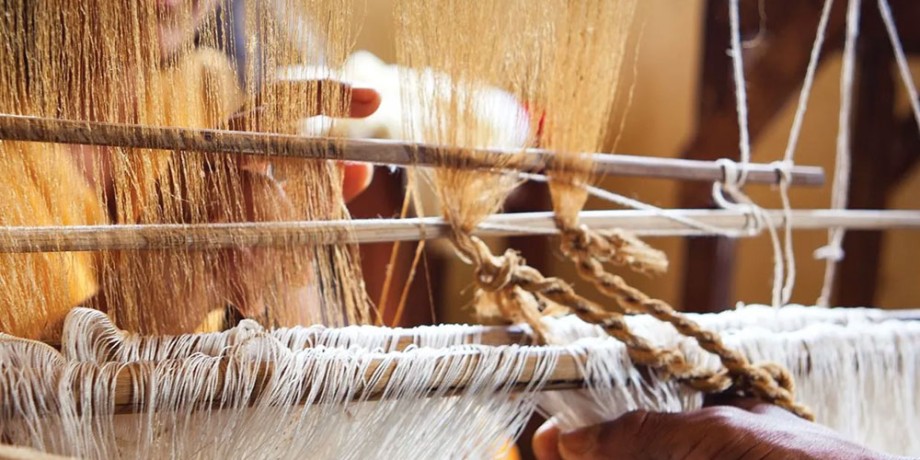
The traditional textile arts of India have a rich and vibrant history that spans centuries. From the intricate hand-woven fabrics of the past to the contemporary fusion of traditional techniques with modern design, Indian traditional textile arts have evolved over time to reflect the changing cultural and economic landscape of the country.
The earliest evidence of textile production in India can be traced back to the Indus Valley Civilization, which existed around 2500 BCE. Excavations of Indus Valley sites have revealed the existence of a sophisticated textile industry, with evidence of cotton spinning and weaving. The use of natural dyes, such as indigo and madder, was also prevalent during this period.
As the centuries passed, various dynasties and rulers left their mark on Indian textile arts. The Mughal Empire, for example, introduced new techniques and designs, such as the use of gold and silver thread, and the creation of the famous "chikankari" embroidery. The British colonial period also had a significant impact, with the introduction of new machinery and techniques, as well as the export of Indian textiles to other parts of the world.
With the advent of industrialization, Indian traditional textile arts underwent a major transformation. Hand-woven fabrics were replaced by machine-made textiles, and traditional dyeing techniques gave way to chemical dyes. This led to a decline in the quality and popularity of traditional textile arts, and many artisans were forced to abandon their craft.
However, in recent years, there has been a resurgence of interest in traditional Indian textile arts. The rise of sustainable and ethical fashion has led to a renewed appreciation for the beauty and craftsmanship of hand-woven fabrics and natural dyes. Many artisans and designers are now working to preserve and revitalize traditional textile techniques, while also incorporating contemporary designs and motifs.
One example of this is the revival of the traditional "ikat" technique, which involves tie-dying the yarn before it is woven. This technique is now being used to create modern, colorful patterns and designs, while still preserving the traditional technique. Similarly, natural dyes are also making a comeback, with many artisans and designers using organic and locally sourced materials to create vibrant, eco-friendly colors.
The use of traditional textile arts is also being promoted through various government initiatives and programs. For instance, the “Khadi and Village Industries Commission” was established in 1956 to promote the production and sale of khadi (hand-spun cloth) and other village-based industries. This commission provides training, financial assistance, and marketing support to artisans, helping to ensure the survival of traditional textile arts.
In addition, a number of designers and fashion houses are also working to promote traditional textile arts in the global market. They are reviving traditional techniques and motifs and are also promoting the use of natural dye and organic cotton. This not only helps to preserve traditional textile arts but also helps to promote sustainable and ethical fashion.
In conclusion, Indian traditional textile arts have a rich and vibrant history that has evolved over time to reflect the changing cultural and economic landscape of the country. From the earliest days of the Indus Valley Civilization to the present day, the traditional textile arts of India have always been an expression of the country's rich cultural heritage. However, the traditional textile arts faced a decline in popularity and quality due to industrialization and the shift towards machine-made textiles. But in recent years, there has been a resurgence of interest in traditional textile arts, with a renewed appreciation for the beauty and craftsmanship of hand-woven fabrics and natural dyes. Many artisans and designers are working to preserve and revitalize traditional textile techniques, while also incorporating contemporary designs and motifs. Government initiatives, NGO's and designers are also promoting traditional textile arts in the global market, reviving traditional techniques and motifs and promoting the use of natural dye and organic cotton. This not only helps to preserve traditional textile arts but also helps to promote sustainable and ethical fashion, ensuring that these traditional textile arts continue to be a vibrant and important part of India's cultural heritage for generations to come.



Leave a Comment